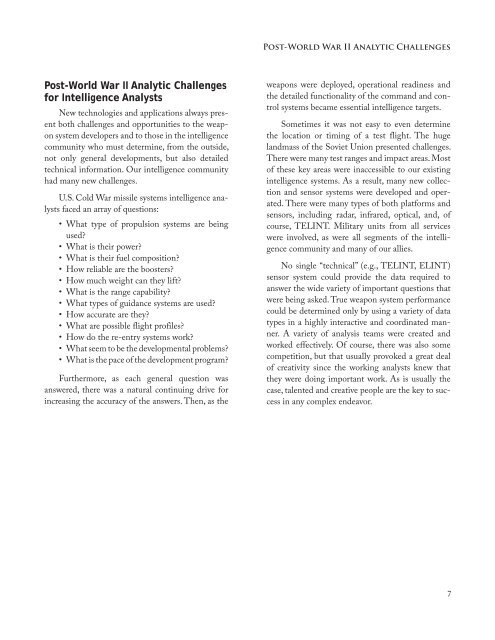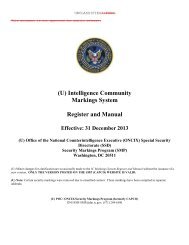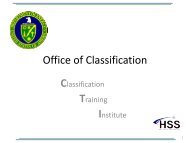Telemetry Intelligence (TELINT) During the Cold War
telint-9-19-2016
telint-9-19-2016
Create successful ePaper yourself
Turn your PDF publications into a flip-book with our unique Google optimized e-Paper software.
Post-World <strong>War</strong> II Analytic Challenges<br />
Post-World <strong>War</strong> II Analytic Challenges<br />
for <strong>Intelligence</strong> Analysts<br />
New technologies and applications always present<br />
both challenges and opportunities to <strong>the</strong> weapon<br />
system developers and to those in <strong>the</strong> intelligence<br />
community who must determine, from <strong>the</strong> outside,<br />
not only general developments, but also detailed<br />
technical information. Our intelligence community<br />
had many new challenges.<br />
U.S. <strong>Cold</strong> <strong>War</strong> missile systems intelligence analysts<br />
faced an array of questions:<br />
• What type of propulsion systems are being<br />
used?<br />
• What is <strong>the</strong>ir power?<br />
• What is <strong>the</strong>ir fuel composition?<br />
• How reliable are <strong>the</strong> boosters?<br />
• How much weight can <strong>the</strong>y lift?<br />
• What is <strong>the</strong> range capability?<br />
• What types of guidance systems are used?<br />
• How accurate are <strong>the</strong>y?<br />
• What are possible flight profiles?<br />
• How do <strong>the</strong> re-entry systems work?<br />
• What seem to be <strong>the</strong> developmental problems?<br />
• What is <strong>the</strong> pace of <strong>the</strong> development program?<br />
Fur<strong>the</strong>rmore, as each general question was<br />
answered, <strong>the</strong>re was a natural continuing drive for<br />
increasing <strong>the</strong> accuracy of <strong>the</strong> answers. Then, as <strong>the</strong><br />
weapons were deployed, operational readiness and<br />
<strong>the</strong> detailed functionality of <strong>the</strong> command and control<br />
systems became essential intelligence targets.<br />
Sometimes it was not easy to even determine<br />
<strong>the</strong> location or timing of a test flight. The huge<br />
landmass of <strong>the</strong> Soviet Union presented challenges.<br />
There were many test ranges and impact areas. Most<br />
of <strong>the</strong>se key areas were inaccessible to our existing<br />
intelligence systems. As a result, many new collection<br />
and sensor systems were developed and operated.<br />
There were many types of both platforms and<br />
sensors, including radar, infrared, optical, and, of<br />
course, <strong>TELINT</strong>. Military units from all services<br />
were involved, as were all segments of <strong>the</strong> intelligence<br />
community and many of our allies.<br />
No single “technical” (e.g., <strong>TELINT</strong>, ELINT)<br />
sensor system could provide <strong>the</strong> data required to<br />
answer <strong>the</strong> wide variety of important questions that<br />
were being asked. True weapon system performance<br />
could be determined only by using a variety of data<br />
types in a highly interactive and coordinated manner.<br />
A variety of analysis teams were created and<br />
worked effectively. Of course, <strong>the</strong>re was also some<br />
competition, but that usually provoked a great deal<br />
of creativity since <strong>the</strong> working analysts knew that<br />
<strong>the</strong>y were doing important work. As is usually <strong>the</strong><br />
case, talented and creative people are <strong>the</strong> key to success<br />
in any complex endeavor.<br />
7








